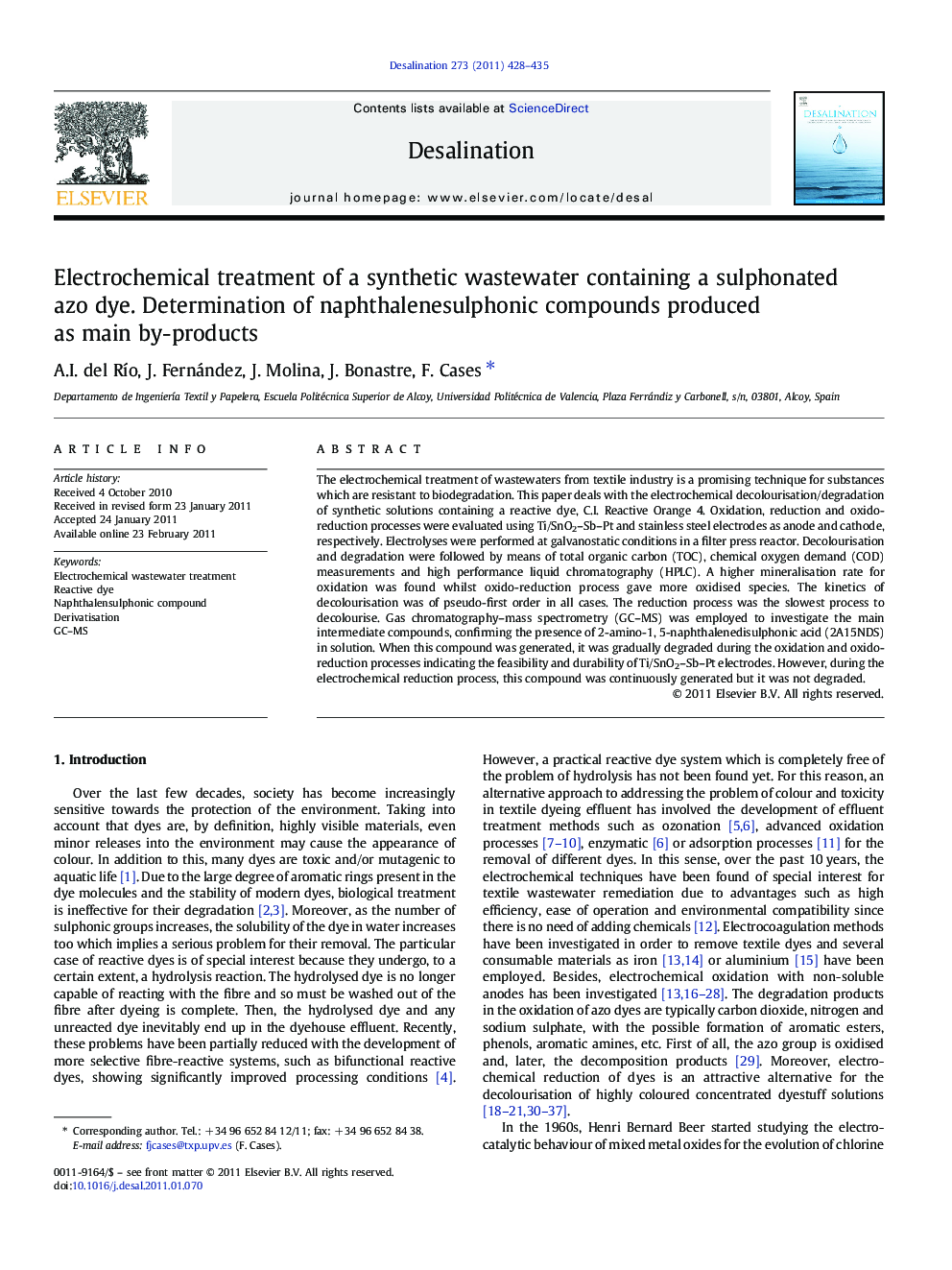| کد مقاله | کد نشریه | سال انتشار | مقاله انگلیسی | نسخه تمام متن |
|---|---|---|---|---|
| 625166 | 1455418 | 2011 | 8 صفحه PDF | دانلود رایگان |

The electrochemical treatment of wastewaters from textile industry is a promising technique for substances which are resistant to biodegradation. This paper deals with the electrochemical decolourisation/degradation of synthetic solutions containing a reactive dye, C.I. Reactive Orange 4. Oxidation, reduction and oxido-reduction processes were evaluated using Ti/SnO2–Sb–Pt and stainless steel electrodes as anode and cathode, respectively. Electrolyses were performed at galvanostatic conditions in a filter press reactor. Decolourisation and degradation were followed by means of total organic carbon (TOC), chemical oxygen demand (COD) measurements and high performance liquid chromatography (HPLC). A higher mineralisation rate for oxidation was found whilst oxido-reduction process gave more oxidised species. The kinetics of decolourisation was of pseudo-first order in all cases. The reduction process was the slowest process to decolourise. Gas chromatography–mass spectrometry (GC–MS) was employed to investigate the main intermediate compounds, confirming the presence of 2-amino-1, 5-naphthalenedisulphonic acid (2A15NDS) in solution. When this compound was generated, it was gradually degraded during the oxidation and oxido-reduction processes indicating the feasibility and durability of Ti/SnO2–Sb–Pt electrodes. However, during the electrochemical reduction process, this compound was continuously generated but it was not degraded.
Research highlights
► The electrochemical treatment with Ti/SnO2-Sb-Pt anodes is an efficient process.
► Chromatographic techniques verified the generation of 2A15NDS acid as intermediate.
► Oxido-reduction and oxidation degraded of 2A15NDS acid after being generated.
► During reduction 2A15NDS acid was continuously generated but not degraded.
Journal: Desalination - Volume 273, Issues 2–3, 15 June 2011, Pages 428–435